It’s our most anticipated post about the most anticipated time of the hunting year. 2024 rut predictions are here. As in years past, we consulted charts, figures, onX Ambassadors, and good old-fashioned intuition to highlight the best days you should hunt whitetails in 2024.
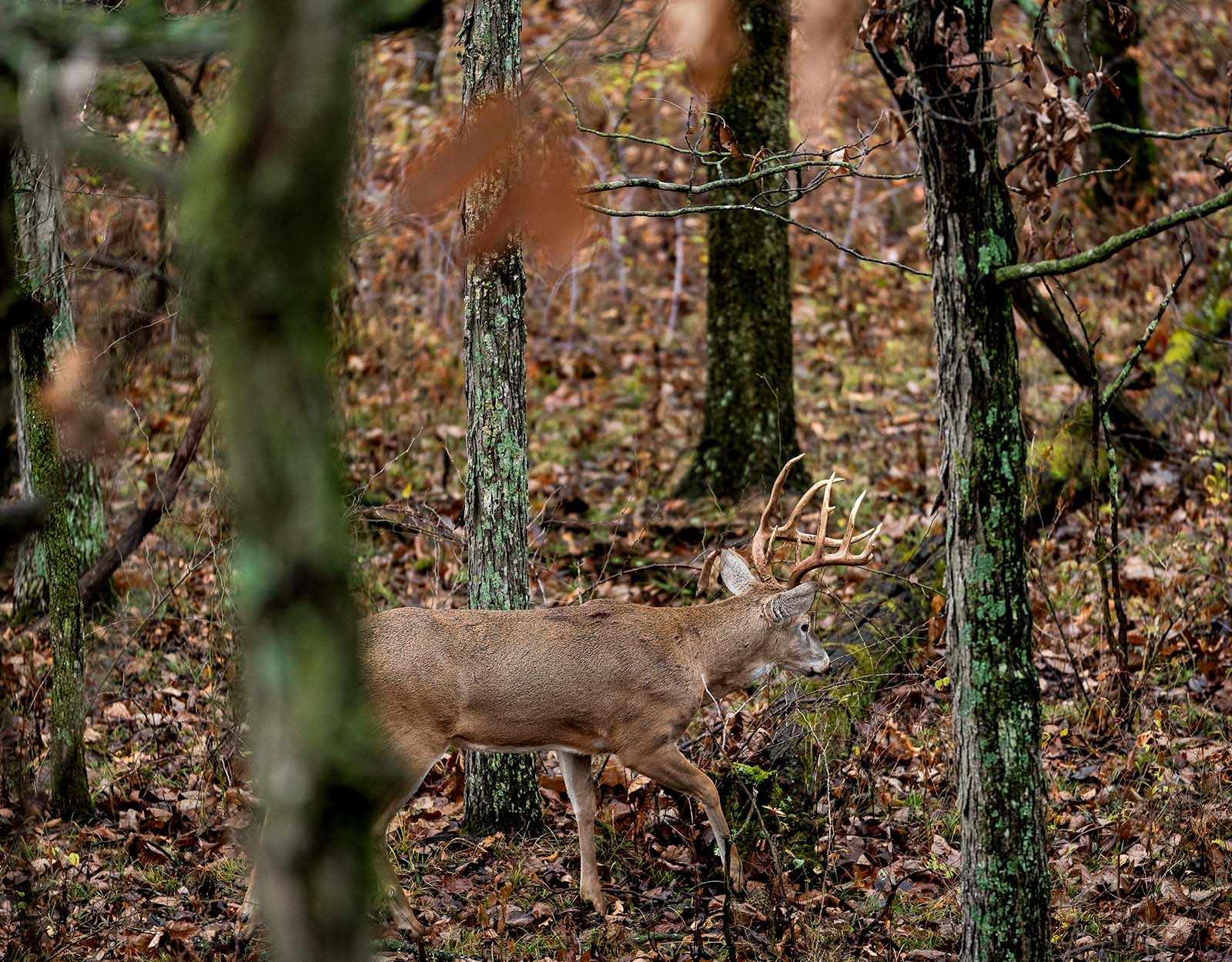
2024 Outlook for Whitetail Hunting
It shouldn’t be news to anyone that the 2023-24 winter was mild. In fact, it was the mildest on record in 140 years. Though whitetails are well-suited for cold, harsh winters last year they got a reprieve and therefore less winter mortality occurred. Many areas experienced an earlier-than-normal spring greening, which translates to abundant nutrition for nursing does and more nutrition for antler growth.
It shouldn’t be news to anyone that the 2023-24 winter was mild. In fact, it was the mildest on record in 140 years.
Barring any severe summer droughts, we can generally expect to have more healthy does and bigger bucks pursuing them in 2024. Moreover, a mild winter means healthier pregnancies and that could allow for more “typical” two-fawn litters, as well as an uptick in three-plus fawn litters. That can add a boost to deer populations that might have been struggling the last few years, though it will take multiple mild winters to truly turn a population around, as outlined well in this Michigan newspaper article.
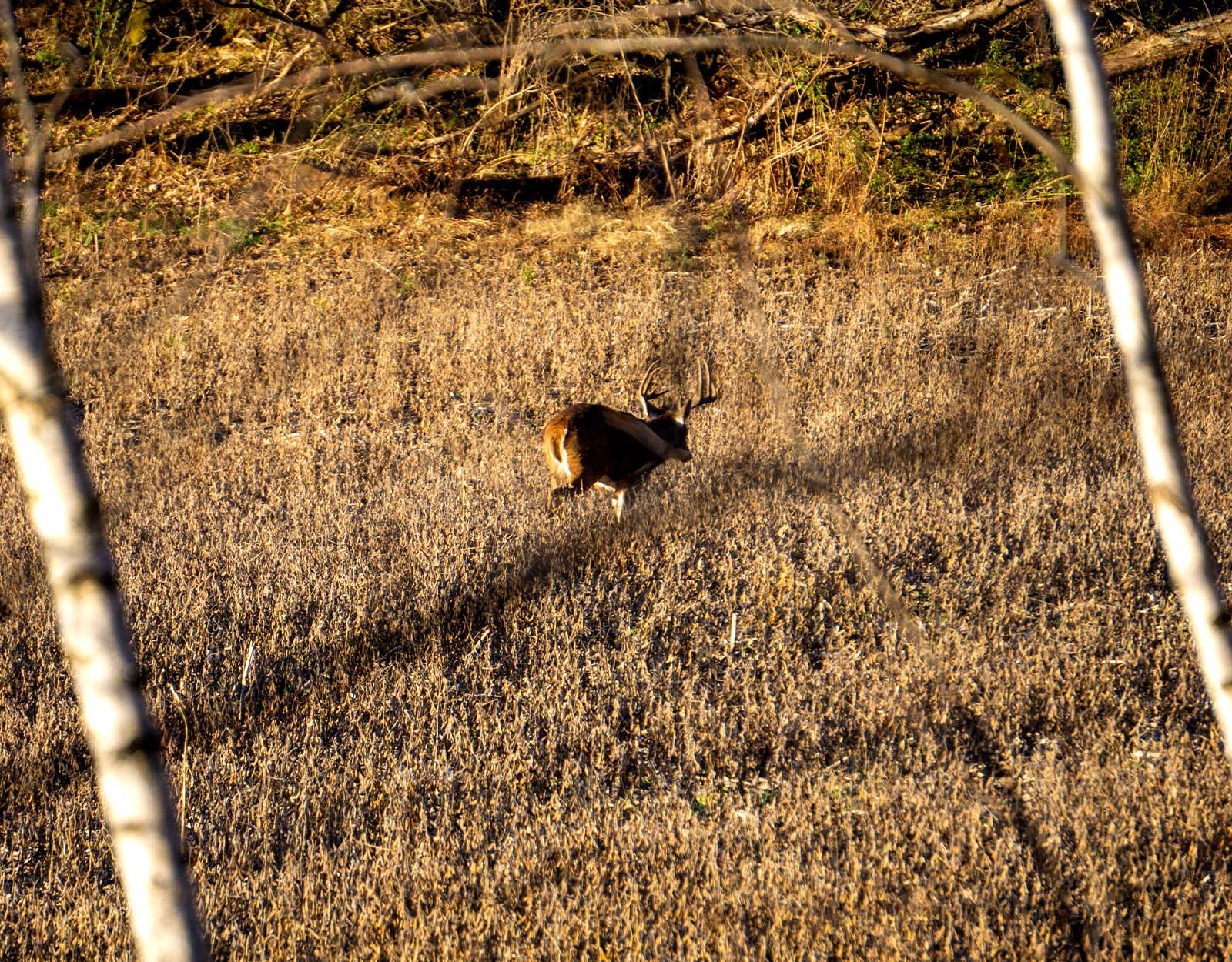
A Bifurcated Rut?
A what the what? Bifurcated: anything that is divided in two. There are predictions out there that this year’s deer rut will be bifurcated, meaning that we’ll see two notable rut periods in the same season. The reason is because of this year’s Hunter’s Moon and the moon’s 19-year Metonic Cycle, which causes the moon to repeat its phases exactly every 19 years.
Last year the Hunter’s Moon fell on October 28, and 19 years before that when the full moon occurred on the same date much of the midwest and south experienced an early rut. That’s what many states had last year too.
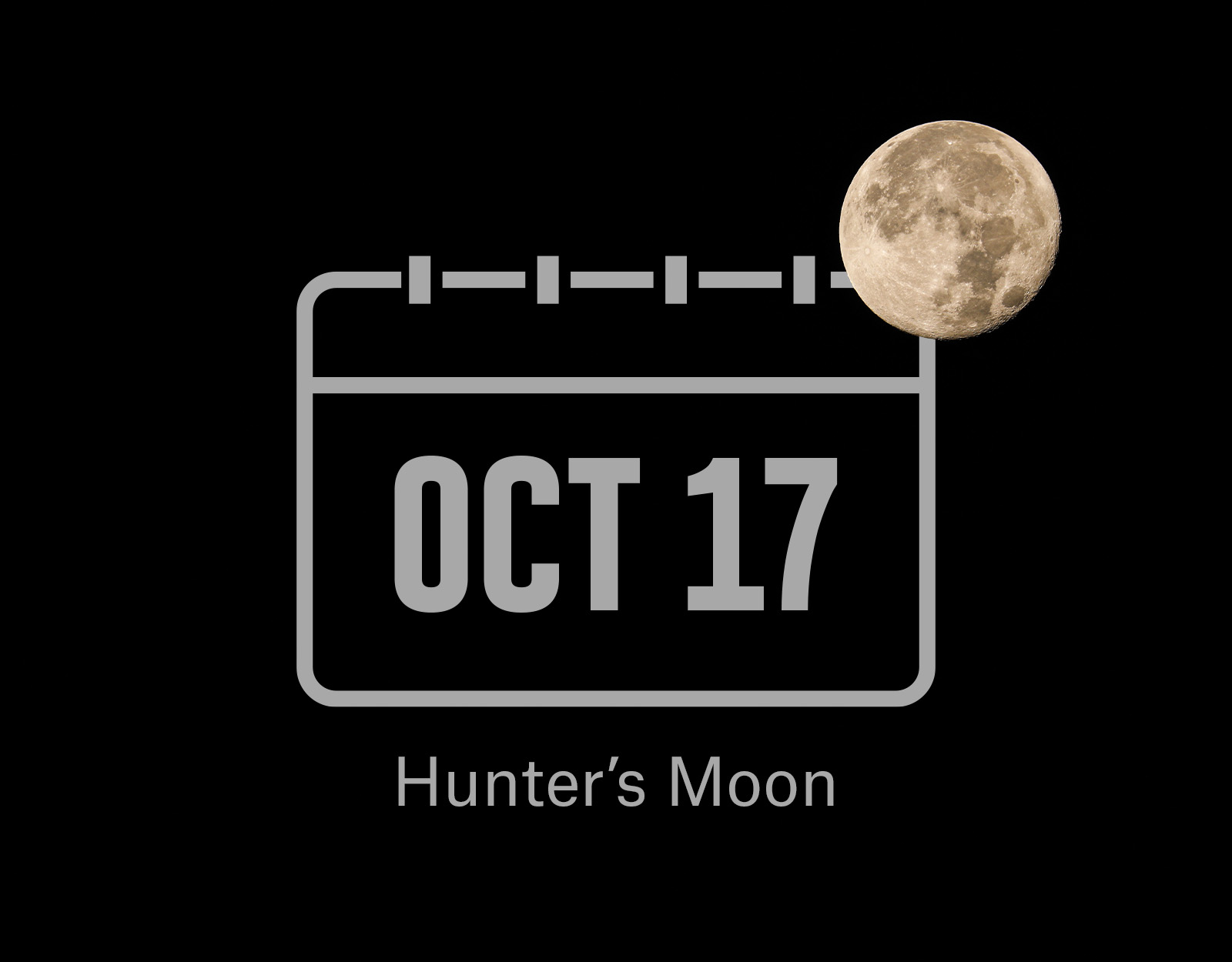
In 2024 the full Hunter’s Moon will peak on Thursday, October 17 at 7:26 AM Eastern Time, and it will appear full beginning on Wednesday. That should kick off the heaviest buck scraping activity of fall. Plus, with this earlier Hunter’s Moon and shortening days, we could see substantial rut activity in October followed by a second peak rut around Thanksgiving. Remember, does come into estrus for 24 hours and if they are not bred in that period they will cycle again 28 days later.
We know moon phases and hunting can be a divisive topic, but the last note here on the matter comes from Field and Stream. This year they wrote a “cheat sheet” for hunting different phases of the moon, and one point that stands out is “when the onset of the rut coincides with the full moon, the peak period of the rut will occur one week later, during the moon’s third quarter.” This puts a bullseye on dates around October 24, and some of our onX Ambassadors seem to agree.
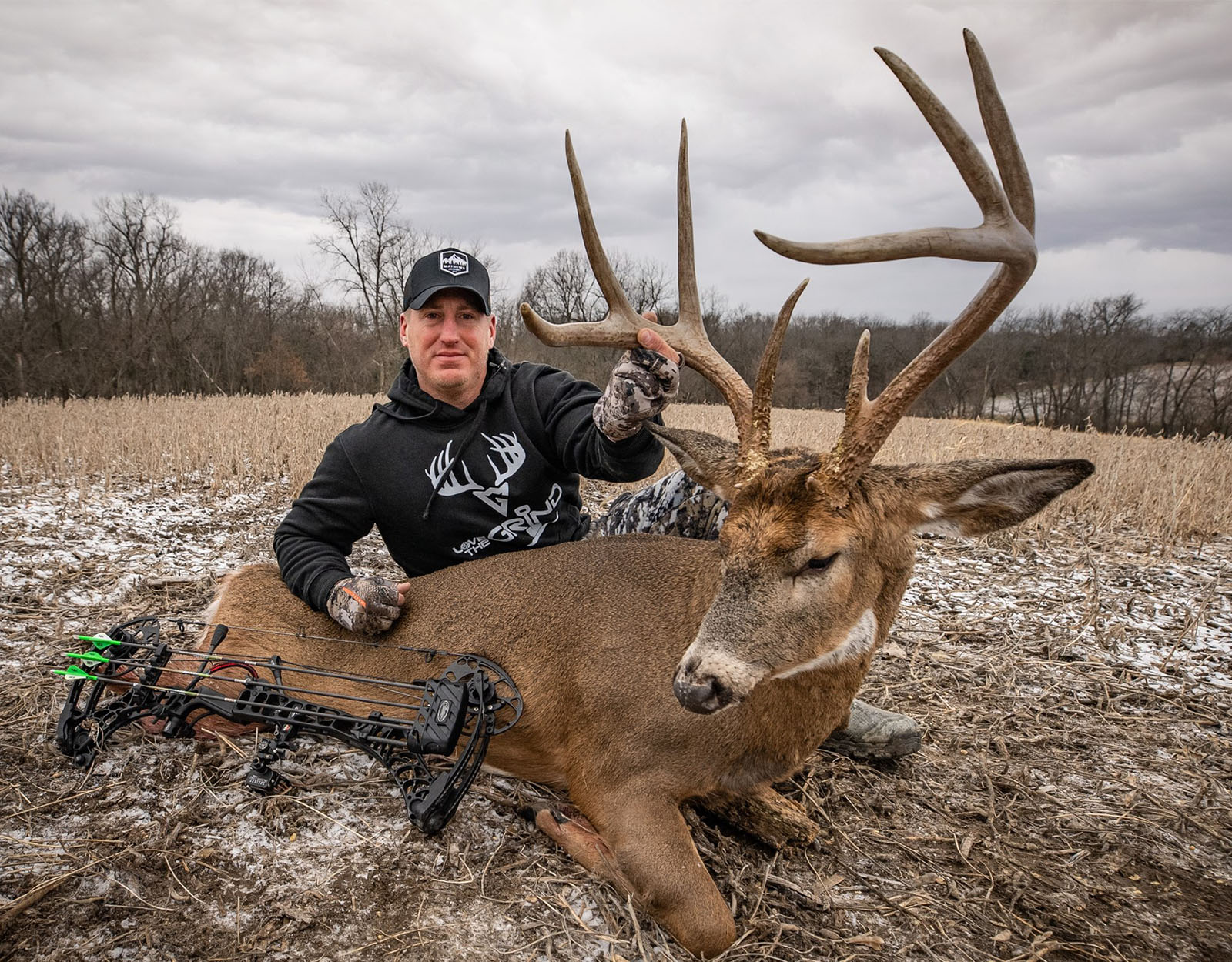
The Best Dates To Hunt Whitetails in 2024
We love polling our Ambassadors for hunting tips and tricks and hearing what five or so dates they’ll be sure to get after it each year. As always, they did not disappoint. Let’s hear who will be hunting when and how.
The Late-October Camp
“The last five days of October, with zero hesitation, for two reasons. One, this is when all bucks (young and mature) are monitoring scrapes, expanding their core areas, and beginning to chase those first does starting to come into heat.
Two, we kill our biggest bucks in this part of the rut, and so do the neighbors. We have a lot of food on our properties and do a lot of habitat work so our tactics definitely help, but at the end of the day the deer are still wild and some ultimately end up in front of our neighbors’ stands. Because of that, we try to get to them first.” – Jeff Althoff, Love The Grind TV
“If I only had five days [to hunt] this year, it would be a toss up between Oct. 27-31 or November 11-15. If I’m on public land, I’m taking that late-October window every time. That’s a great time to catch a big one in a staging area doing his thing well before most of the competition gets serious about their rut hunting.
If I’m on private land, I think that mid-November widow is better…It is a time when the big ones cruise with intention. I don’t think there is a better time to sit all day than the week of the 15th.” – Tony Peterson, First Lite/Meateater
The Early-November Camp
“If I had five days to circle on my calendar to hunt the rut it would be November 1-6. Very few bucks will be locked down but all in search of those first does in heat. It’s not a foolproof plan but it seems to always be an excellent time to catch mature bucks at their most vulnerable. I would get into a tree near bedding or a heavy travel corridor and spend as much time as you can in the stand.” -Shawn Luchtel, Heartland Bowhunter
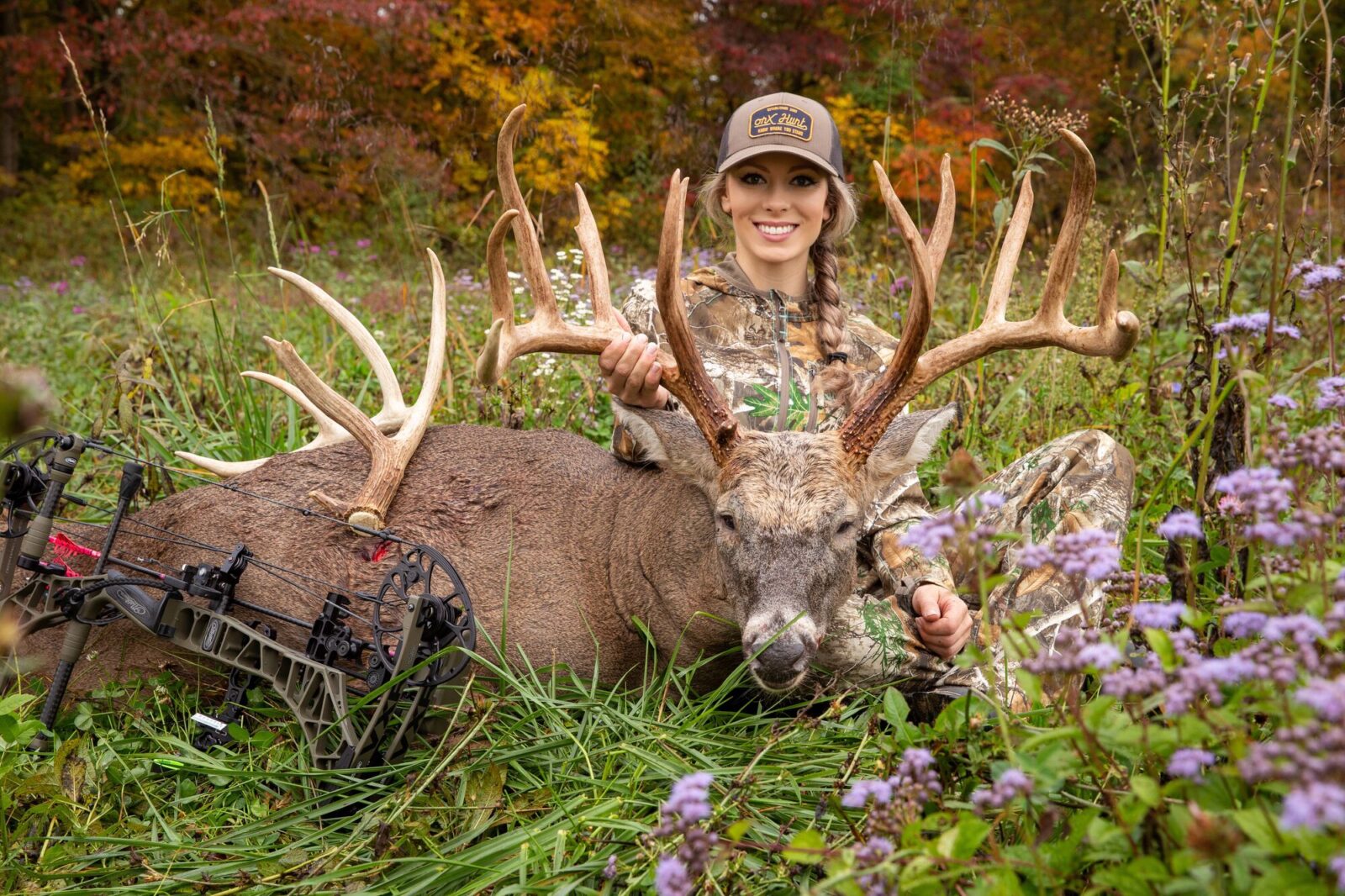
“I circle November 3-7. I have seen more big bucks on their feet these first few days in November than any other time in the month. They are casually cruising, daylighting, and not locked down.” -Emily Schaad, Bowhunter/onX Hunt Ambassador
Emily Schaad with The Freak Buck, 190 2/8 inches (green gross score).
“There are always a few specific days on the calendar that feel extra special. I’ve tagged many bucks in Illinois on November 3rd in the evening and November 10th in the morning. With the three remaining days, I’d select November 6, 7 and 8. The record books also tell us those three days are historically some of the best for catching up with a rutting buck!” -Jake Hofer, Exodus Outdoor Gear
The Mid- or Late-November Camp
“If you make me pick dates during the rut I would go with November 17-22. This is typically after the freak out session the bucks go through when seemingly every doe in the country is in heat, making everything pretty random. As the frenzy starts to wind down, the bigger bucks will get back to some consistency. This is also a great time to see a buck you’ve never seen show up as he starts traveling further distances hoping to find one of the last few does still in heat.” -David Holder, Raised Hunting
“I spend 90% of the rut in a tree in Kansas. I think the best days in Kansas are November 17-21. It’s impossible to pick a few days out of an incredible month of deer hunting. I’ve shot deer in the first week of November and the last week of November, but for me, it seems that mid/later part of November is when I see the best and consistent year-to-year rut action.” -Nathan Krick, Identical Draw
The ‘It’s the South’ Camp
“I love to hunt all phases of the rut but typically my most favorite are days of peak PRE-RUT in South Georgia. There’s less pressure in the woods. Doe groups are more predictable in what areas they are congregated on, which in turn makes mature bucks more predictable. I love hunting cruising mature bucks searching for those first available does. I look at historical trail camera data from year to year as well as personal experiences hunting these type of areas year to year. For me, that peak pre-rut time frame has yielded more big bucks in the back of the truck and sightings from the tree.” -Jordan Barnes, Close Proximity
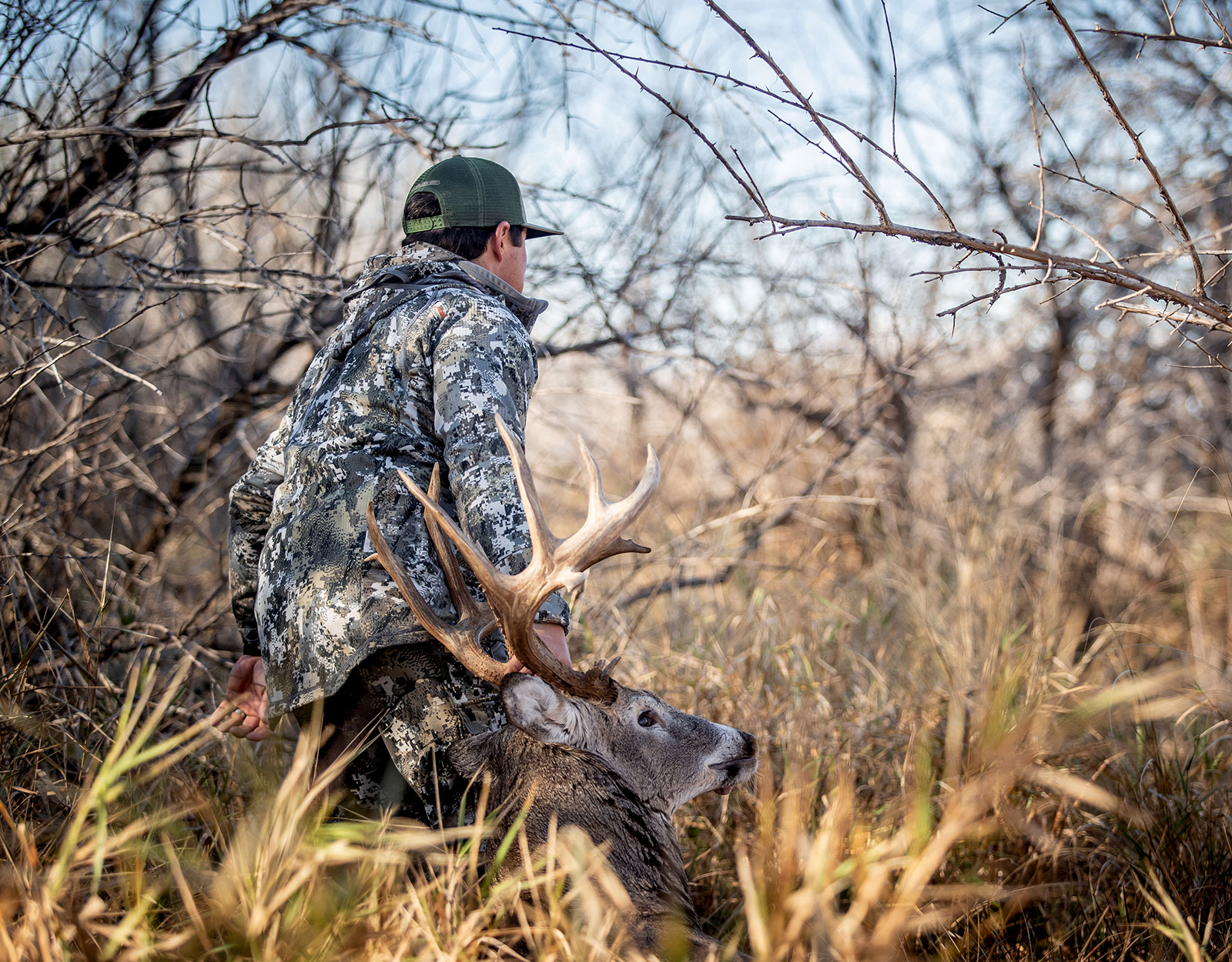
Get the Edge, Prep the Ground
Often you can improve things on the land you hunt that will foster a more productive rut season. Our Ambassadors routinely think holistically about prepping the grounds where they set up their game cameras, treestands, and ground blinds. Here they share some of their best tips for prepping the ground.
“The single most important thing I’ve done on our farm to create the best rut hunting success is creating pinch points that didn’t previously exist. These pinch points force deer through a small area putting them within bow range of our treestands. I do this using fallen trees or debris from clearing more food plots. I have made walls with the tree debris, which force the deer around one end or the other putting them right into one of my shooting lanes. I have a stand set up on each side of the wall so I can hunt either or depending on the wind direction on that particular day. I have harvested lots of big deer using this particular method on our farm over the years.” -Cliff Bailey, Kill Em Outdoors (KEO) Vlogs
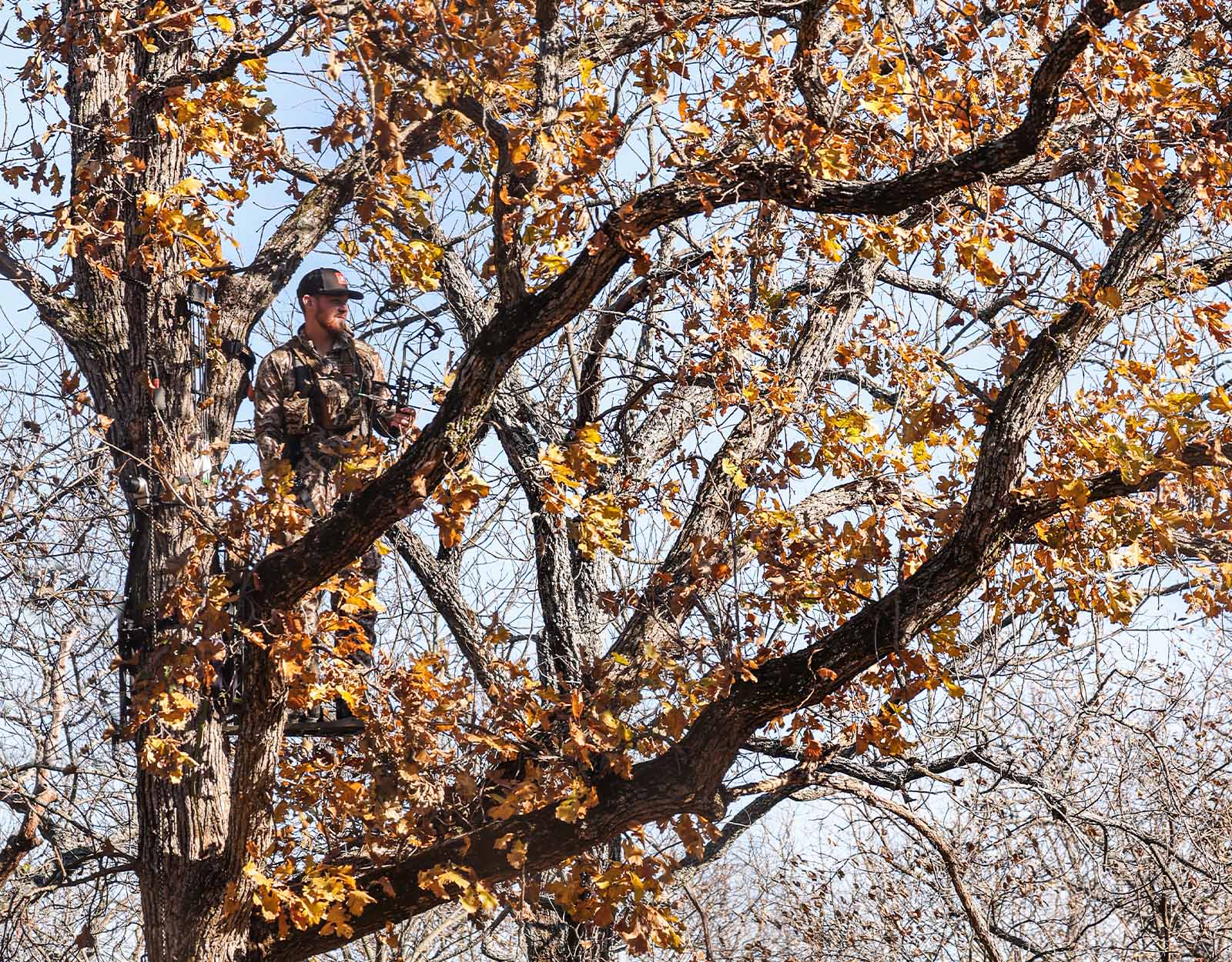
“Cover is king in the rut, so I make sure I have created those dense pockets of cover in the timber, aka. Bedding Thicket. These will concentrate the doe activity as they seek dense cover as the majority of them are yet to be receptive during the pre-rut. So if the does are concentrated in key areas then the bucks movement will not be chaotic; it will be more condensed and strategic as they scent check downwind of these areas I’ve created with a chainsaw and bottle of herbicide. These units are 0.5-2-ish acres in size.” -Matt Dye, Land & Legacy
“My best piece of advice for prepping ground for the rut would be to improve native habitat. Whether it’s improving native grass species or opening up the forest canopy to allow more sunlight to reach the forest floor you will create thicker cover, more native forage, and improved bedding to hold more does during the rut. This will simply attract more bucks.” -Shawn Luchtel, Heartland Bowhunter
Hot Spots for Hunting the Rut
Every hunter has his or her favorite method, stand, or spots to hunt the deer rut. A few Ambassadors were kind enough to share their favorite features (and screenshots) to hunt when the heat is on in fall.
“I will hunt a vast array of different rut funnels but my most favorite thing to hunt is travel corridors that put a bucks nose downwind of doe bedding areas. I love those areas that have a good thick travel route for a buck where he feels safe and the doe bedding areas are thick. I feel like a buck frequents these more so in the daylight than others. I don’t key in on rub lines per se or big rubs. It’s all about where the does are congregated for me. I try to keep it simple. While there are plenty of great rut funnels downwind of doe bedding is my go-to.” -Jordan Barnes, Close Proximity
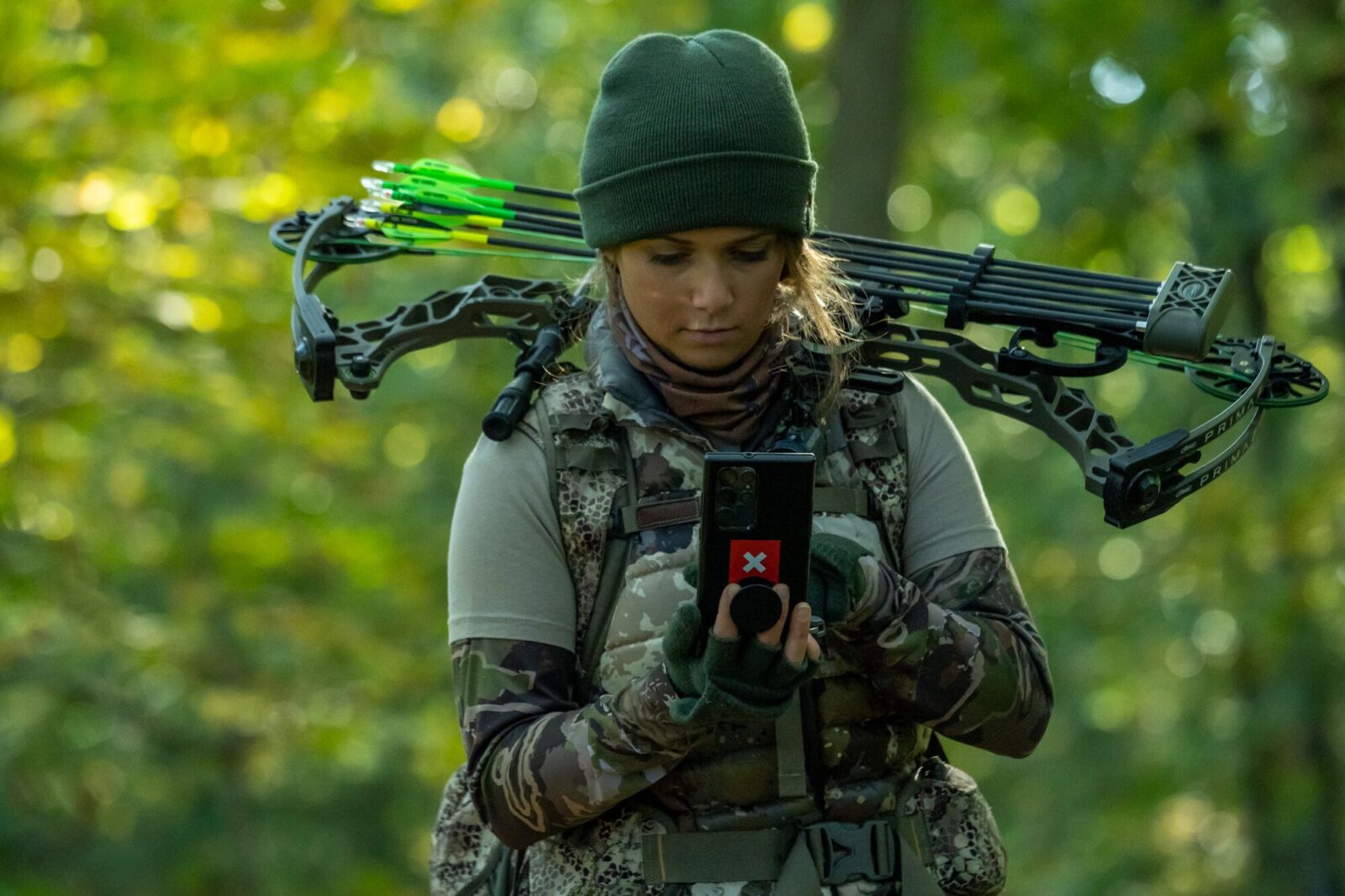
“A pinch near doe bedding. I do my best to pay attention to what the does are doing leading up to the rut. Or if I don’t get to scout ahead of time, any doe sightings are marked on the map as I hunt.
One spot I have had really good luck in the past is a south-facing slope with thick cover. I always see does filter in and out of it to go to and from the ag fields to either side. There is a pinch where the hill is super steep up top on the north side and it slopes down to a trail that runs west-east then turns up almost north-south along the side of it. At the bottom there is a creek ditch. There is a scrape right on that corner and with any kind of south or west wind, it’s dynamite. Bucks are constantly going along that trail to check for bedded does, but because they are forced to that pinch of a trail, any shooter buck will most likely stop on that scrape for a shot.” -Kaitlyn Maus, Kaitlyn Maus Outdoors
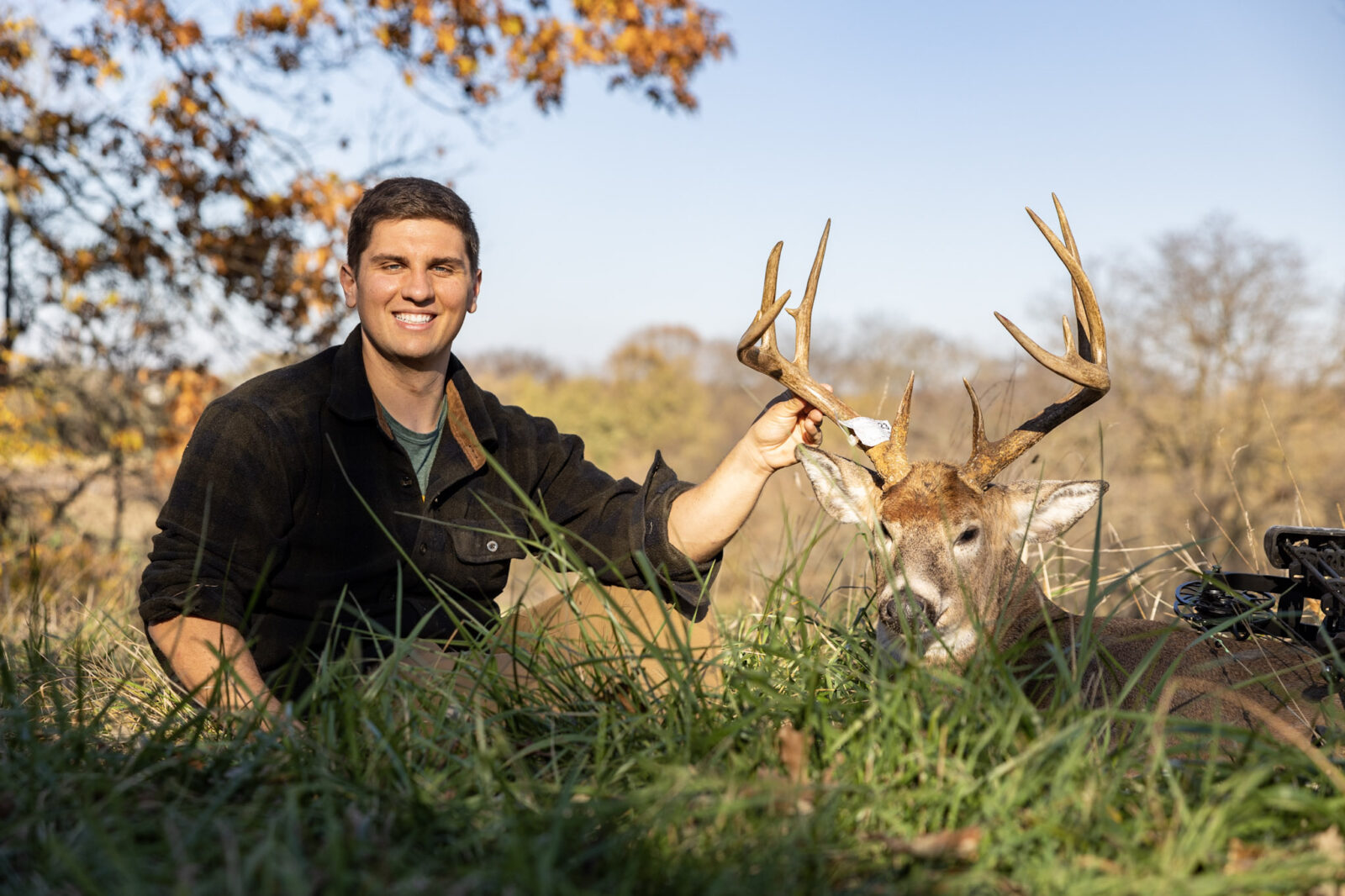
“My favorite rut spot is a slight finger ridge, just off the main ridge near a saddle, in near proximity to doe bedding between two ag fields. Bucks cruise over the saddle between the two ag fields to frequently check the doe bedding area. On multiple occasions I’ve seen 10+ bucks during singular sits, it lays out just perfectly for catching cruising bucks on their feet.” -Jake Hofer, Exodus Outdoor Gear
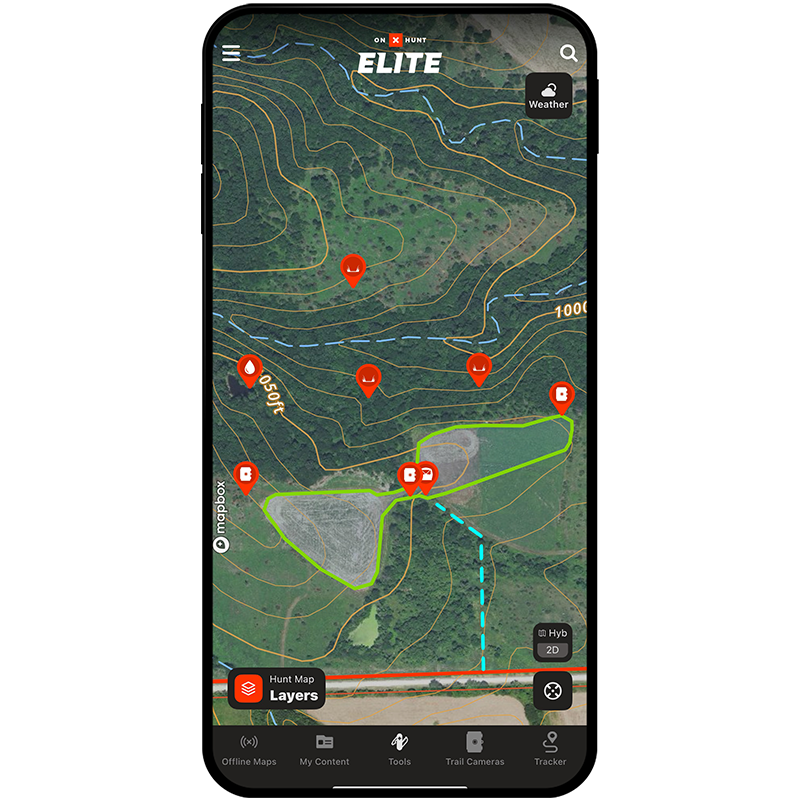
HuntWorx’s Setup
“I prefer to be downwind of a couple bedding areas that we have created that are next to an hourglass food plot [as shown]. This creates early deer movement to our food sources because they are so close to the bedding thickets.
As the deer come out to the hourglass layout, the layout encourages the deer movement through our bottleneck with two different food sources on each side of the hourglass.
The fact the deer are grazers they move through the bottleneck to graze on another food source and to check for other deer. We just happen to be setup in the bottleneck that is 32 yards wide.” -Greg Glesinger, HuntWorx
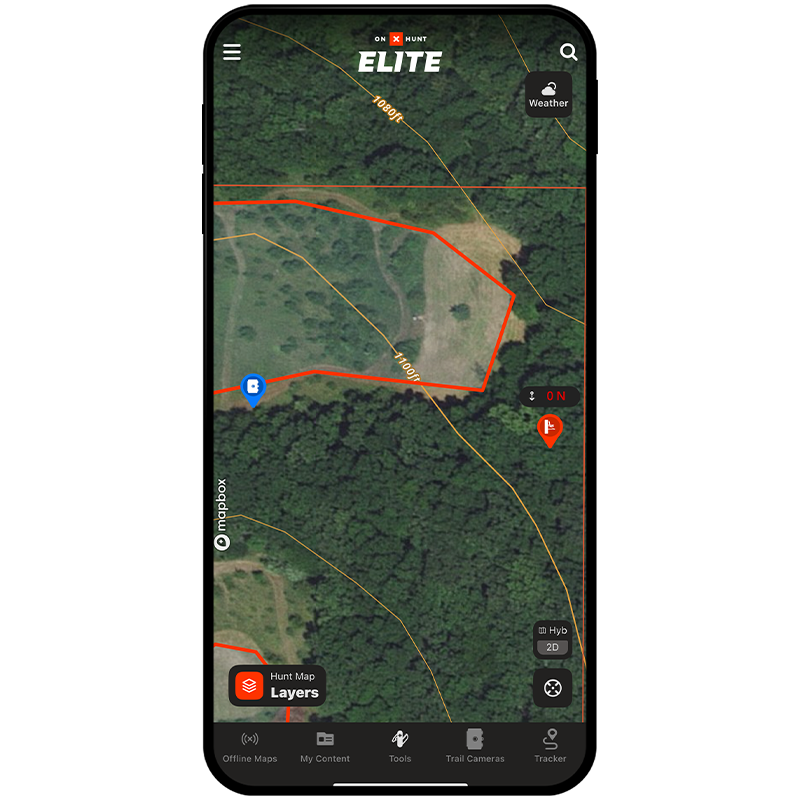
Raised Hunting’s Setup
“Without a doubt, my favorite spot to hunt during the rut is just off of a food plot or a well-used agriculture field [as shown]. While I’m not a big fan of sitting on food sources where I could see more deer, I am a huge fan of sitting fairly close to these areas. It’s been my experience that sitting 80 to 100 yards off of a food source, allows me to not see as many deer but more frequently see better and bigger deer. Seems like small bucks and does have no issues walking out into the open fields long before dark, but getting the big boys to do the same seems much less frequent. So several years ago I started sitting off the food plots where big bucks might feel comfortable staging at before the cover of nightfall lures them into the open.
This tactic has paid off more than once for me and I found a hidden bonus as well. By not sitting on the food source I don’t have to contend with trying to get out of my stand with several deer in close proximity. Instead, I let the deer work their way past me and into the feeding area, if the right deer doesn’t show up, I simply slip down and sneak out, leaving a location I can come back to and hunt again. Maybe the best thing about these particular stand locations is I have found them highly productive both morning and evenings, making these locations some of my first choices during the rut.” -David Holder, Raised Hunting
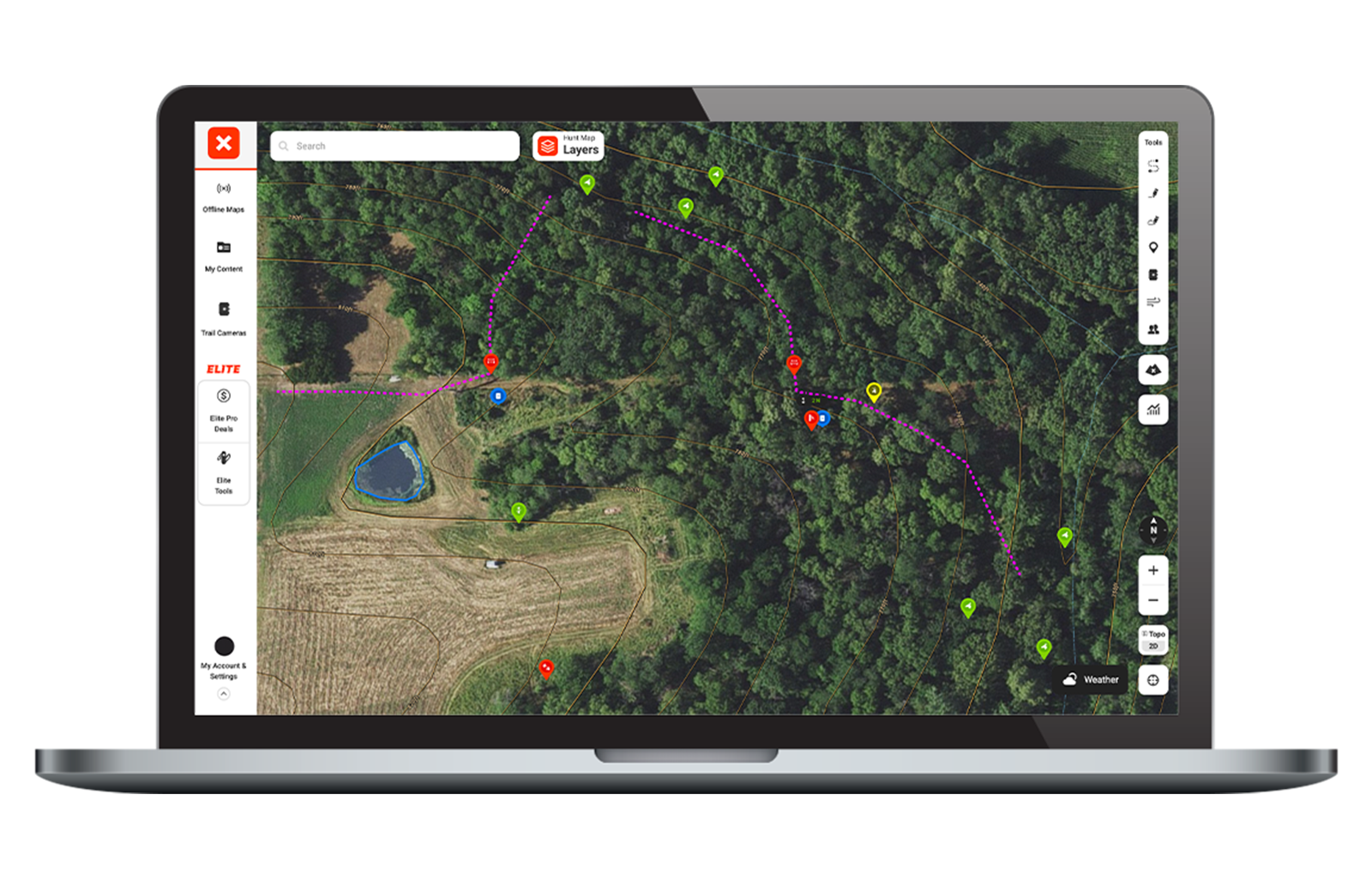
“If I had to pick one single spot to sit every day during the rut, I would choose a crossing/pinch in between doe bedding areas. With little terrain change where I’m at, emphasis gets put onto any notable feature that would pinch deer movement down.
In this case, it’s a fence crossing that’s on the south side of a bedding area along the creek. With access from the west on a mowed trail & positioning my stand to the west of this movement, I can thread the needle scent profile-wise on days where northerly winds grace the woods. This sets up a great pattern of movement I’ve observed for bucks looking for their next doe.
Starting on the south end of the woods, these bucks work from south to north eventually pinching down at the fence crossing coming by within 15 yards. By identifying this feature that pinches down deer movement, I’m able to enter and exit without ever crossing into a sensitive area like the doe bedding all the while sitting in wait where they will cross if in the area.
Keeping this pattern of movement in mind, I would do my best to locate a similar feature to the fence crossing that worked well for varying winds to keep me in the game on this property more throughout the rut.” -Josh Sparks, Midwest Whitetail
Make the Most of the Deer Rut With onX Hunt
onX Hunt is made for hunters, by hunters, so when it comes to having an edge in the field for pursuing bucks chasing does the Hunt App is as vital as the stand you sit in or the food plot you’re set up over.
Here’s what our Ambassadors use the most in the App to make their hunts successful.
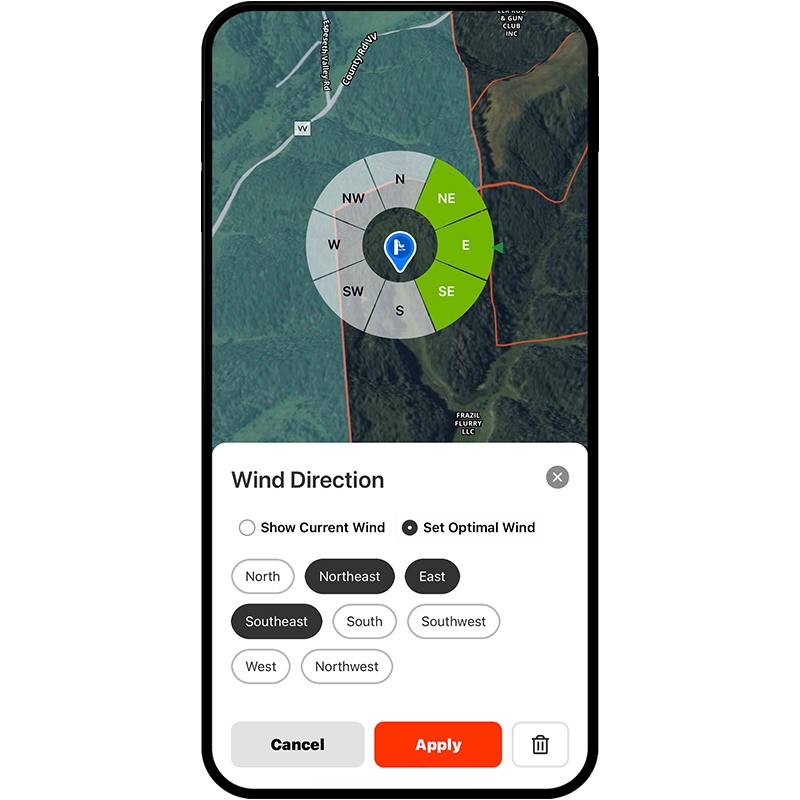
Optimal Wind and Wind Calendar
“Optimal Wind and the Wind Calendar. I play the wind every sit obviously, and when I’m scanning possible choices for the next sit it keeps my decision-making process more streamlined when I can look at the map and see the 4-6 locations that will work best for the wind that morning or evening. And if I have a spot I really want to get to, I can check the Wind Calendar and know that I’ll be in that tree the next time the wind shifts where I need it to be without having to cross reference other weather apps.” -Sam Soholt, Photographer/Writer/onX Hunt Ambassador
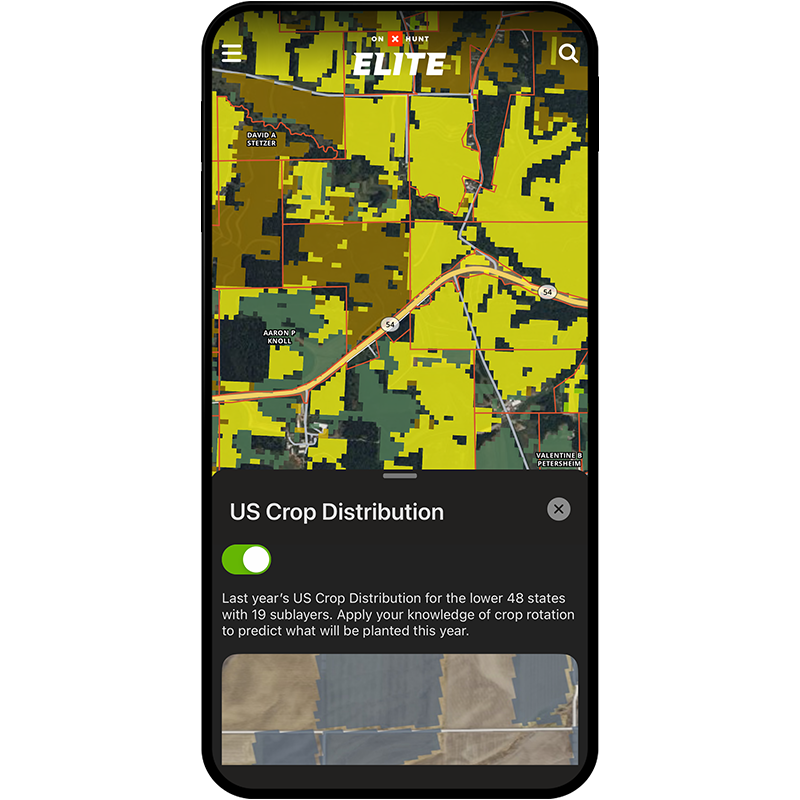
The Whitetail Trifecta
“I use at least three features all the time. These are simple but crucial for my rut hunts, especially if I am hunting out-of-state or someplace new:
- The Hybrid feature when looking at the map. I live for topo lines during the rut because those help me pinpoint buck movement.
- Wind on Waypoints to help determine my best location to hunt.
- Crop data – I want to know what was where for crops to help me locate does.” -Nathan Krick, Identical Draw
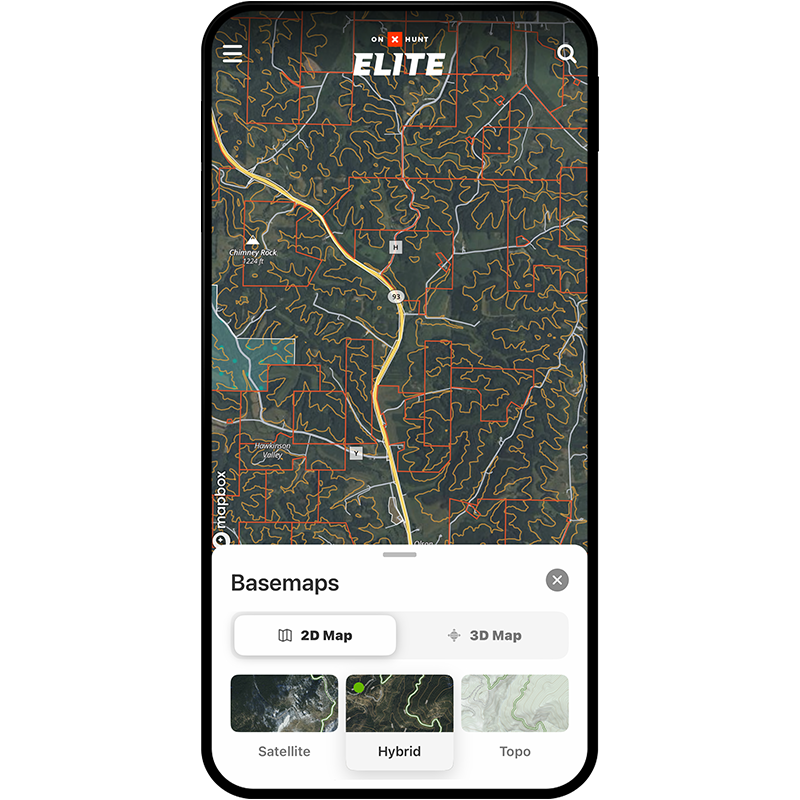
Basemap Customizations
“Using simple tools in the App such as 3D Mode and the Hybrid Basemap view with Leaf-Off Imagery allows me to find ridges, saddles, and fingers that would be good travel areas to hunt during the rut. Once you’ve located these areas, getting boots on the ground determining which of these locations is close to bedding or thicker areas will be the ticket.” -Emily Schaad, Bowhunter/onX Hunt Ambassador
Rut Myths Debunked
Busting a few of the most common “Rut Myths” our Ambassadors have heard.
The rut will save you from poor effort.
Pressured deer don’t lose their minds during the rut the way we think they do. You still have to put in the effort to scout, play the wind, and get in and out with minimal impact. You still have to work the deer like it’s not the rut. -Tony Peterson
It’s too hot—the deer are only rutting at night.
Heat will certainly slow the amount of daylight activity you see, but I have killed deer in mid-November when it was a low of 50-60 at night, and highs in the 70s. You may need to be closer to bedding areas, and the normal plan of sitting a travel route won’t work, but deer are still acting like deer somewhere. Get closer to wherever that is. You might bump deer, but I’d rather bump a deer and have a chance than spend a week watching the leaves blow around. -Sam Soholt
It’s going to be constant action.
Sometimes the rut is the most difficult time of year for seeing deer. -Clay Newcomb
Scrapes start to ‘dry up’ during the rut.
Over the years of running more trail cameras than I care to admit, the scrape activity of mature bucks stays strong throughout the rut. Although there are short periods of decreased activity, I’ve seen some of the biggest bucks I’ve had the privilege to hunt hitting scrapes November 9th-12th. -Jake Hofer
The rut is too chaotic for those targeting a specific buck, with bed-to-food patterns behind us.
If you’ve created dense cover, you can condense and hold doe groups in your target buck’s core area. During the pre-rut, that buck has one thing on his mind: find a receptive doe. He will search dense cover pockets to find her, and will walk with the wind in his face or a cutting wind. Play the wind and put yourself in close proximity to or in between the pockets of cover where the does are. -Matt Dye
You’re out of cards when a buck goes into lockdown.
It’s still within reason to find a way to kill that buck. Every property is different but here’s two examples of how to adjust:
1. Get near a food source where the does are feeding. That locked down buck will follow the doe and feed near her. If you’re close enough, you’ll have a shot.
2. Sometimes, the locked down buck will take a doe into the thickest, most remote part of the property. Study your properties on onX and with boots on the ground in the offseason and get on the edge of where they may be. –Jeff Althoff
Get After It
Hunting the rut can be fun, challenging, and memorable. Don’t forget to make the process enjoyable. It will keep you from taking these opportunities to hunt for granted.
If you’ve had success with these hunts, let us know on social media, and check below where we bust a few of the most common “Rut Myths” our Ambassadors have heard.